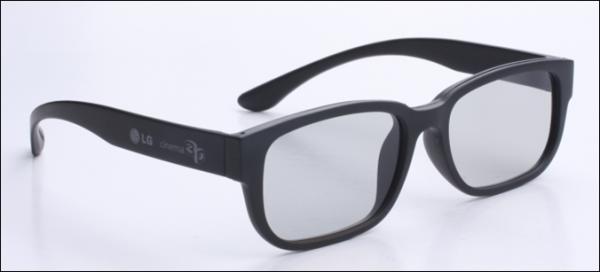3D Technology Shootout, Revisited

A couple of weeks ago, I dropped by an active/passive 3D TV shootout held by LG as part of their effort to publicize the benefits of their passive 3D approach over competing active-shutter systems. LG has survey research data showing that some 80 percent of viewers choose their passive 3D system over any of their competitors' active sets, when asked about color, picture quality, brightness, and comfort of glasses. Format war over?
I was a little suspicious - Sure, the idea of passive is attractive, and I'd definitely rather wear a lightweight, inexpensive pair of passive glasses (or, since I'm a prescription glasses wearer anyway, a set of LG's own clip-on passive lenses). But I knew I wasn't getting the entire picture from a passive solution - since passive 3D employs a system in which alternate lines are polarized for each eye (to match the left/right polarization of passive 3D glasses), so the effective vertical resolution of HD content viewed on a passive 3D set would be halved: 1,920 x 540, rather than 1,920 x 1080. That's far from true 1080p, and the situation's even worse for content that's lower resolution to begin with - so passive 3D isn't a compromise most videophiles are willing to make. Sony has responded to LG's study with much the same argument.
Today, Dr. Raymond M. Soneira, who heads up DisplayMate Technologies, the people behind a widely used set of professional and enthusiast video calibration tools, released a very interesting head-to-head comparison of active and passive 3D technologies that calls into question my assumptions about the performance of passive 3D systems - and seems to provide a solid foundation of experimental evidence to back up LG's survey data.
The finding that really threw me for a loop was his statement that "3D images have only horizontal parallax from the horizontally offset cameras, so the vertical image content for the right and left eyes are in fact identical [emphasis Soneira's]." If Soneira is correct (and based on the research he presents it seems that he is), despite the fact that from a hardware perspective the two channels serve up slightly different images employing 540 lines of resolution each, there is no meaningful information - aside from horizontal positioning given the relative positions of the two cameras or lens arrays - missing from the perspective of either eye, thus there's no effective halving of vertical resolution in passive 3D.
This differers considerably from Sony's findings, and indeed, Soneira's claims are a bit reminscent of the arguments of those who claim they can hear differences between pieces of audio gear that measure identically - a hotly contested topic in the A/Vphile arena: "Some reviewers," Soneira says, "have evaluated 3D TVs by analyzing the combined display hardware performance for the right and left channels instead of the actual 3D visual performance tests that we have done. . . and arriving at results that don't apply to actual human 3D vision!"
Still, the evidence Soneira presents is compelling. He tested his claim by presenting viewers a series of examples of fine text (with characters from 6-10 pixels tall at 1080p) from the Blu-ray of the IMAX 3D documentary Space Station. Given that character details were large enough that they'd be indistinguishable at 3-5 pixels, text should be unreadable if passive 3D truly delivered only half resolution. Soneira identified 14 points in the film where such text was observable, and in all cases it was indeed legible using passive 3D glasses and LG and Vizio passive 3D sets - and, reported Soneira's observers - such text details were actually sharper and easier to read on the passive sets.
In Soneira's words, "those half resolution claims are manifestly wrong – no, ands ifs or buts!" He goes a bit further, with a very strong vote for passive technology overall. "Passive Glasses TVs," Soneira writes "delivered substantially and demonstrably better all around 3D imaging, 3D Contrast and sense of 3D depth, better 3D sharpness, better overall 3D picture quality, immersion and realism, and freedom from 3D ghosting, image Crosstalk, and flicker."
Those are bold claims for sure, but if this report's findings are borne out (and given LG's survey results), the question of vertical resolution should probably be put aside and units using either technology judged simply on their visual performance - which probably isn't a bad idea anyway. Keep that in mind next time you're shopping for a 3D TV.
- Log in or register to post comments




















































